A work conversation sparked these. Then I just got curious.
Studio Ghibli’s movies are always described as “colorful” but it’s interesting what that really means. Like with a lot of things, less is so often more.
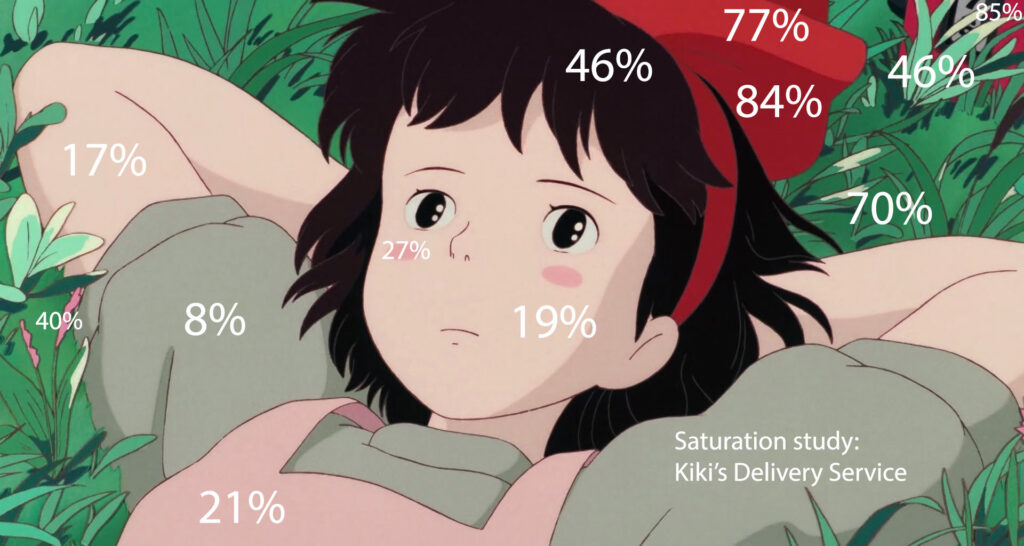
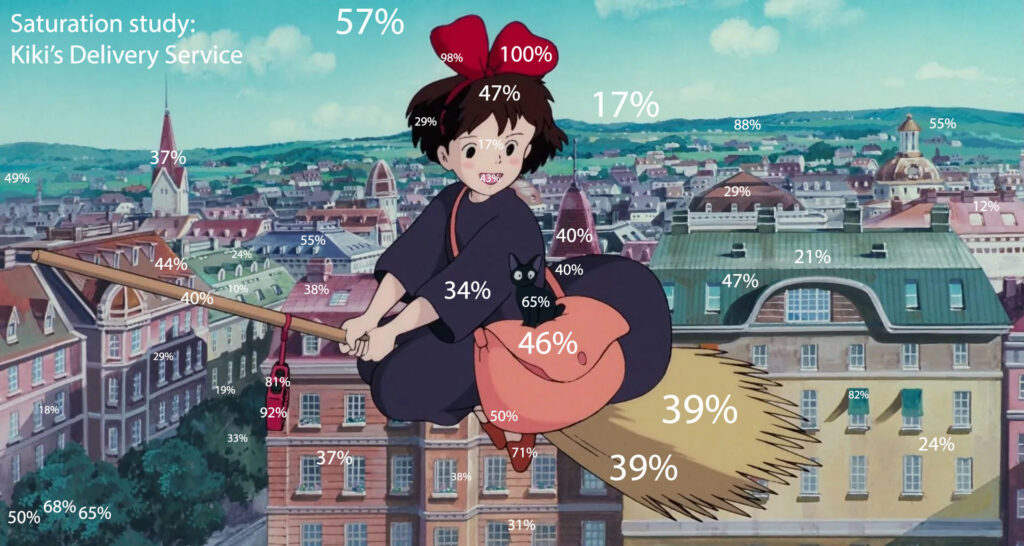
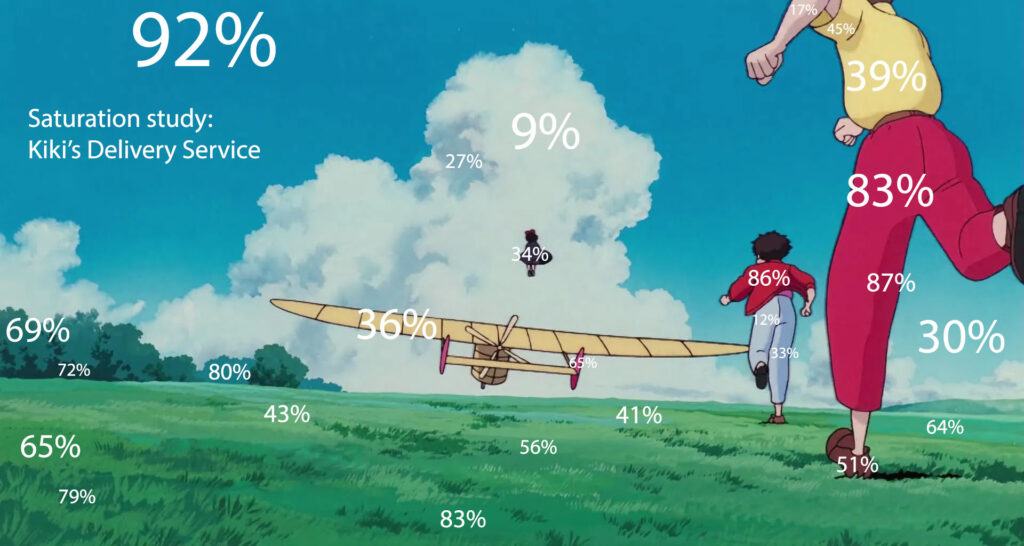
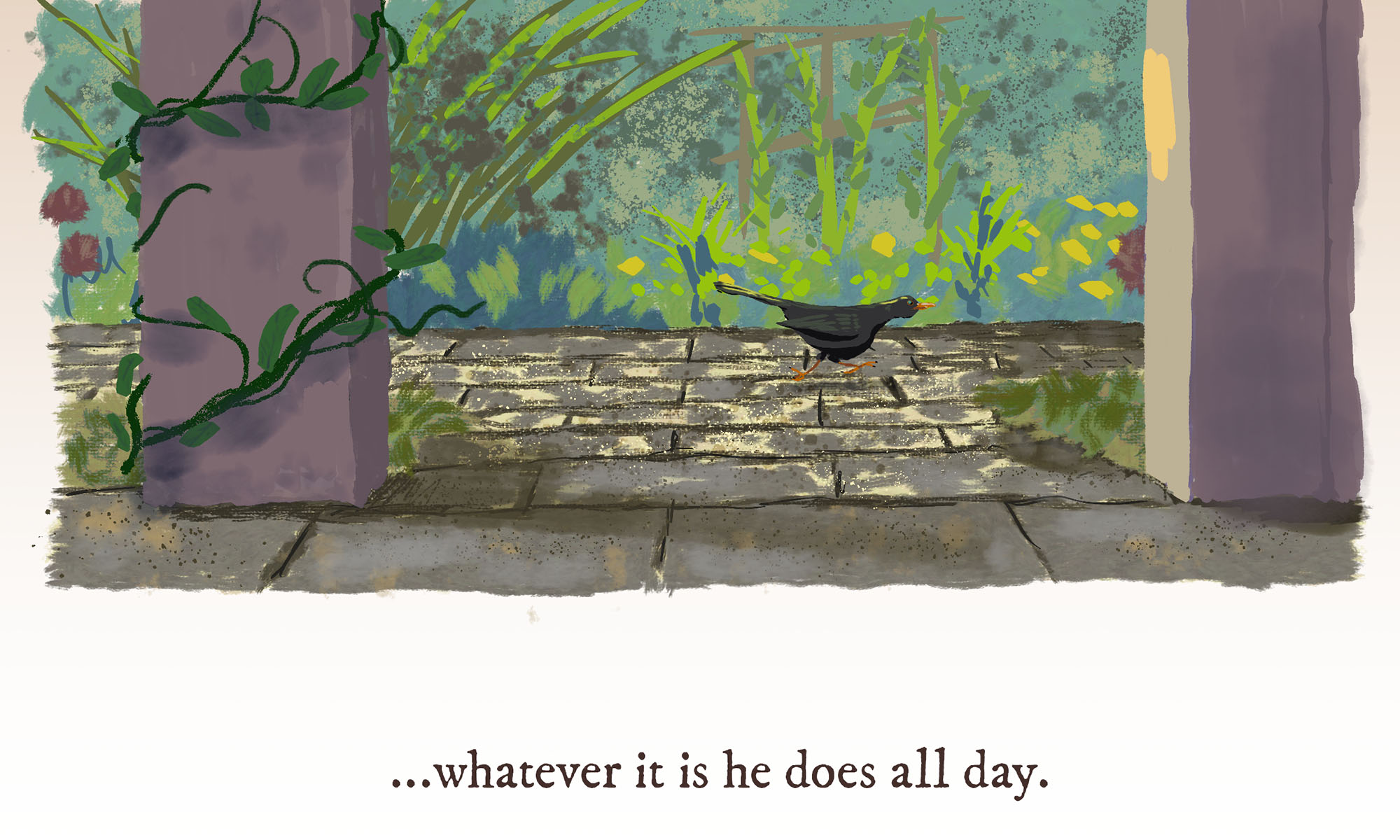
Cinematic/tech artist & filmmaker. Online since 1999.
We found our audience. Troy Minkowsky’s “The Garden (1910)” was requested for this year’s Shawna Shea, and took home Best Experimental Short! Audience feedback was across the board praise for Troy’s touching, funny and challenging retelling of the Adam and Eve myth.
I was DP and Co-Producer on this 30 minute film, shooting on a pair of iPhones and producing the digital+practical special effects. It was an enormous but fun challenge, working out first how a magician from the early 20th Century would have accomplished the shot, then how I’d fake it–with a mix of puppets, green screen, miniatures, CGI and composites. We simulated manually cranked film with hand coloring in Blackmagic Fusion. It was film nerd heaven.
Big congratulations also go out to Miriam Olken, who took home a Spirit Award for her screenplay “Jaw” the same night. Olken served as my Assistant Director on “The Leaves.” It’s fantastic to see someone so talented getting real recognition.
If you haven’t seen the film yet, it’s available on Vimeo. (Free login required, due to non-sexual nudity.) And yeah, that was me at far right–God’s only angel with a goatee.
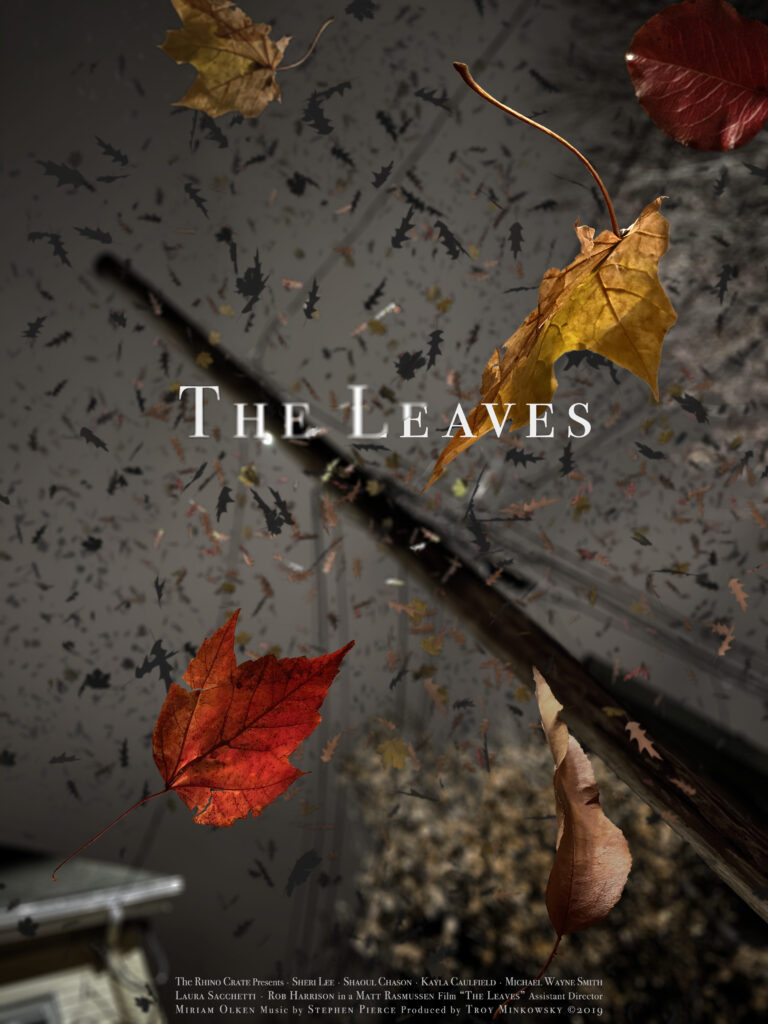
If you’re in the Boston area Sunday, February 8, be sure to catch the world premier at the Boston Sci-Fi Film Festival.
I love making stuff. The films I get involved with always seem to result in fun builds. It’s possible I’m getting my priorities backwards.
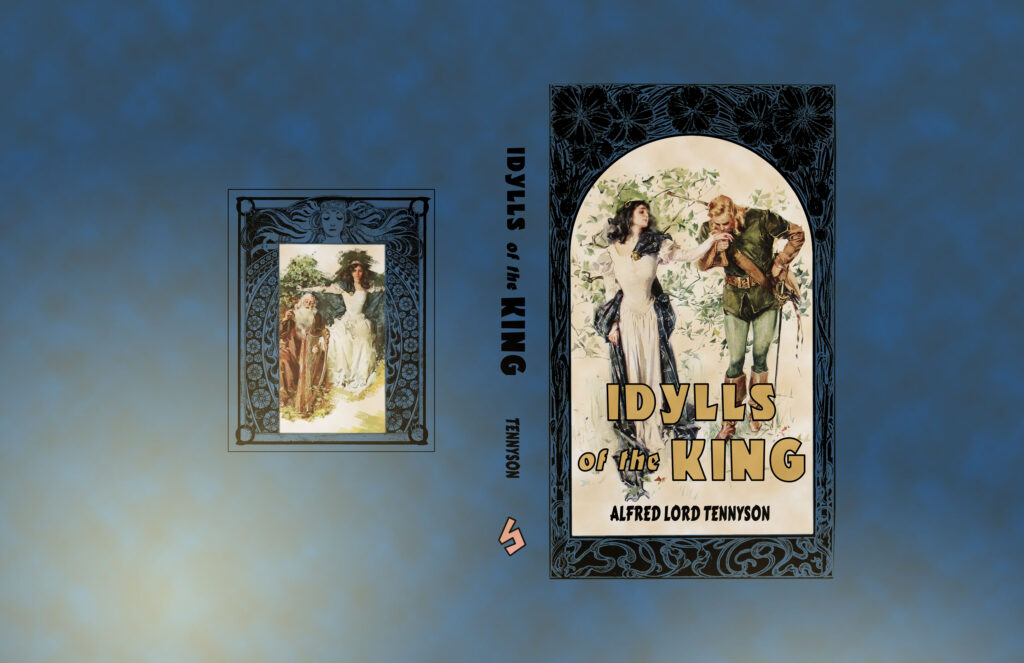
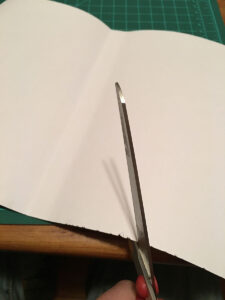
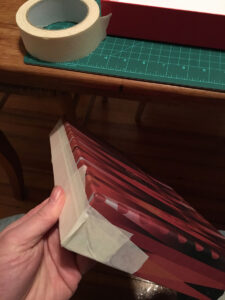
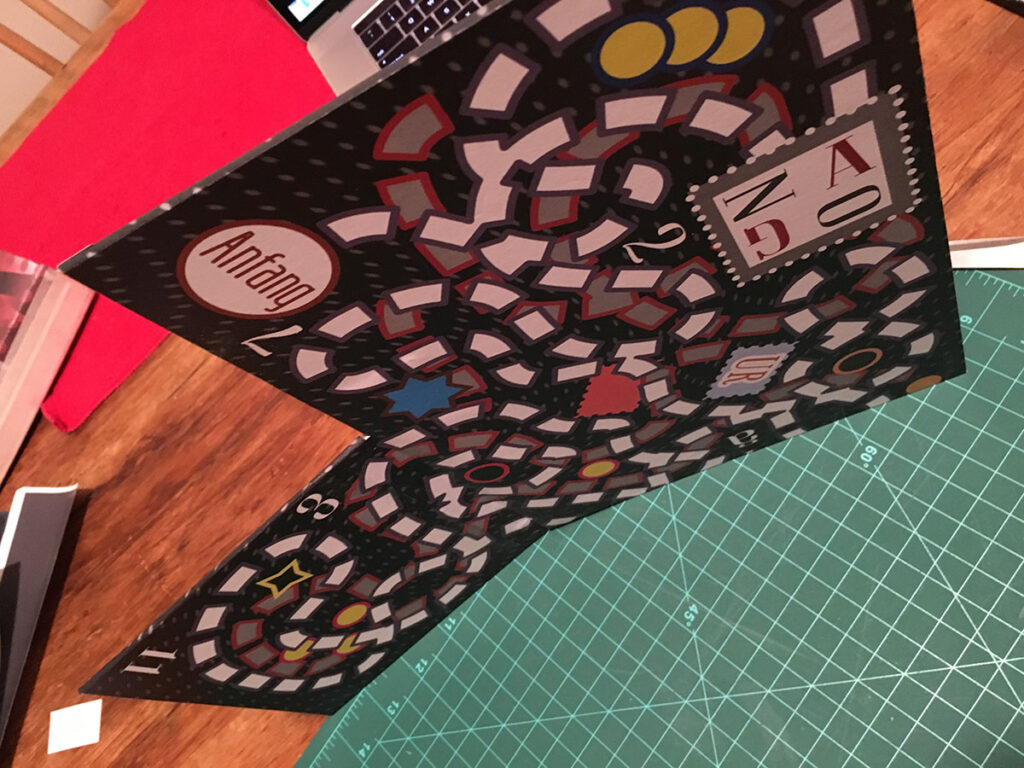
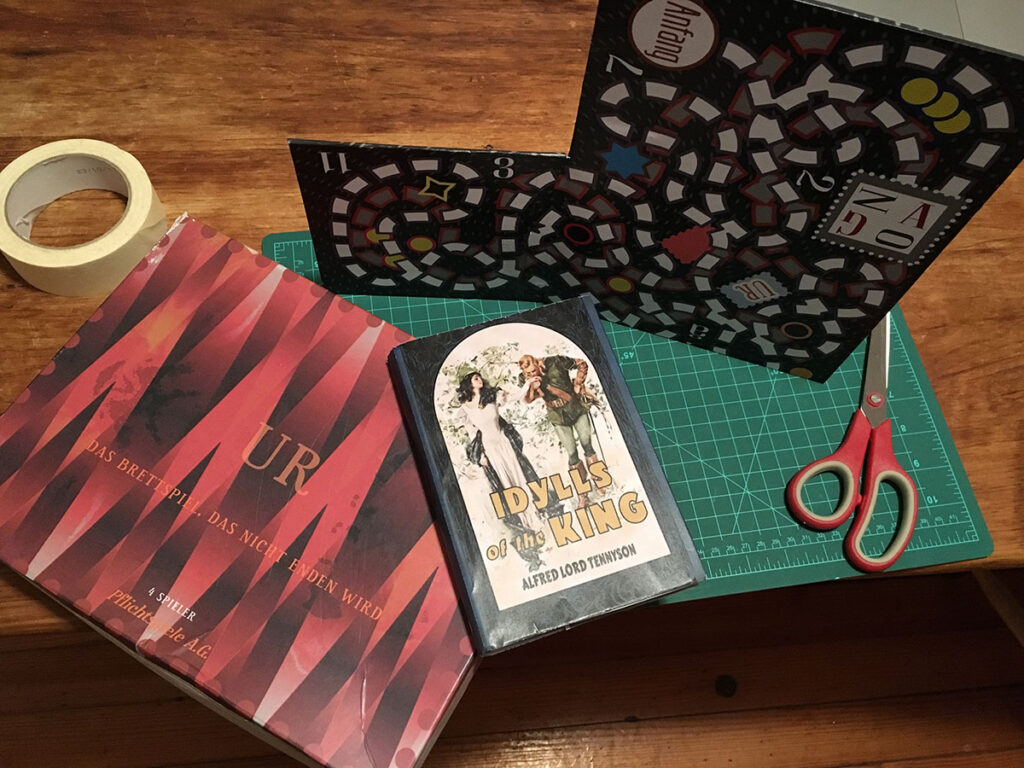
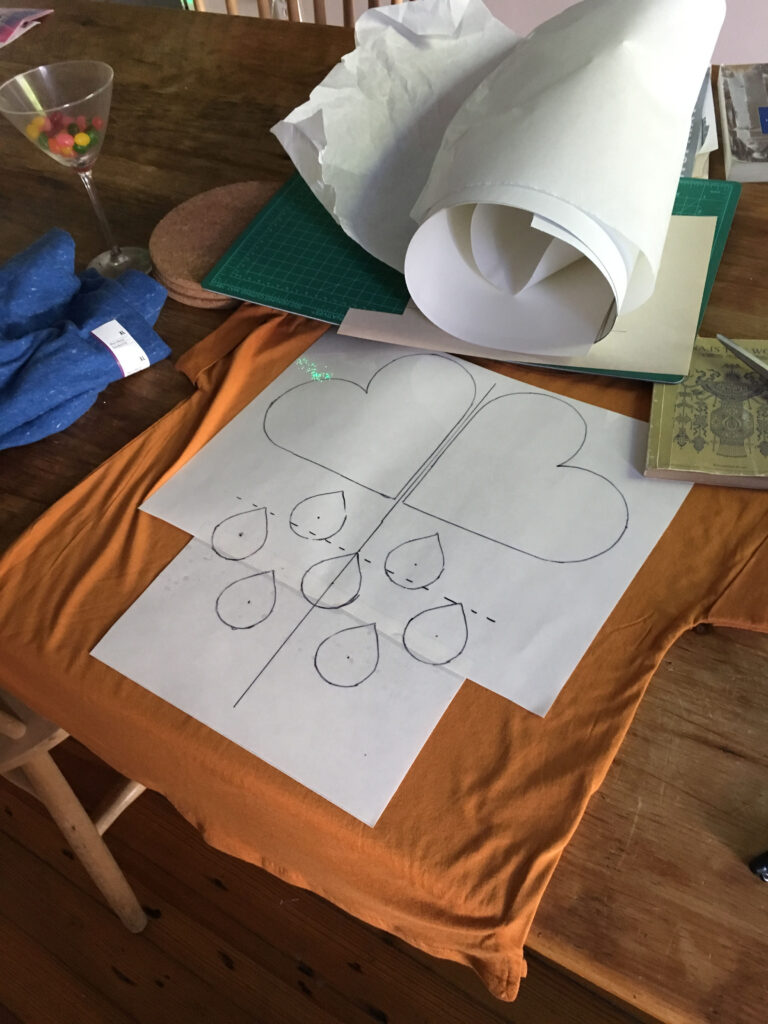
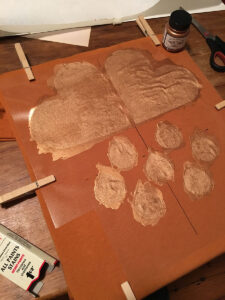
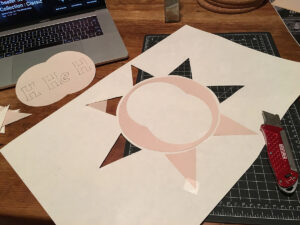
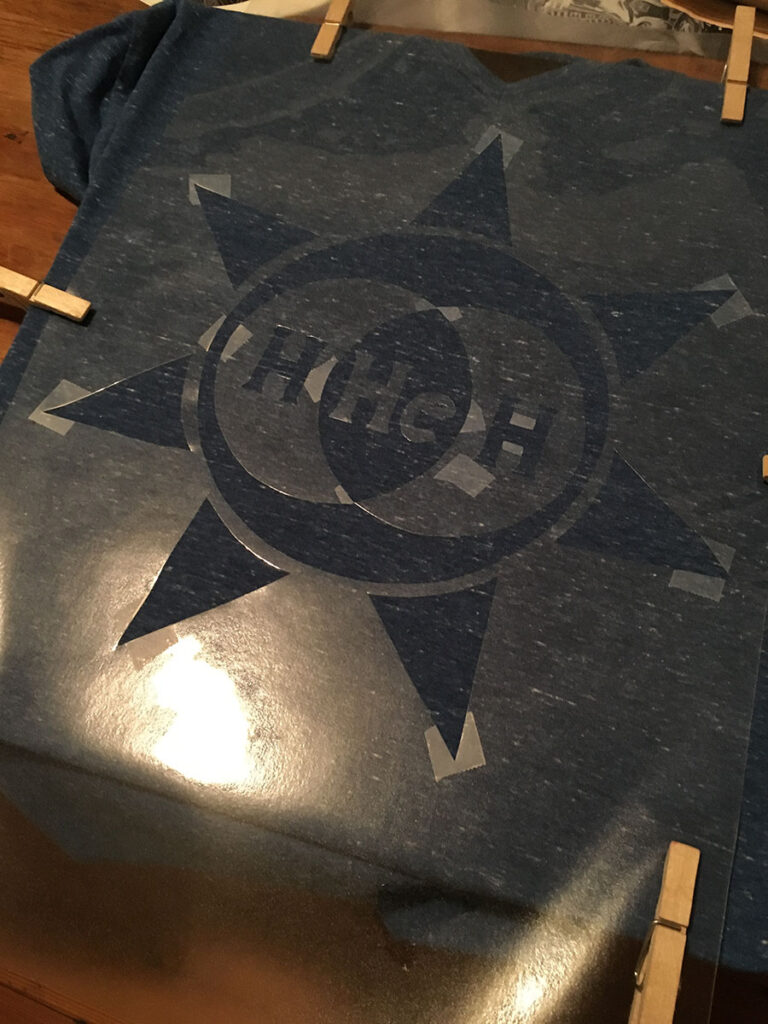
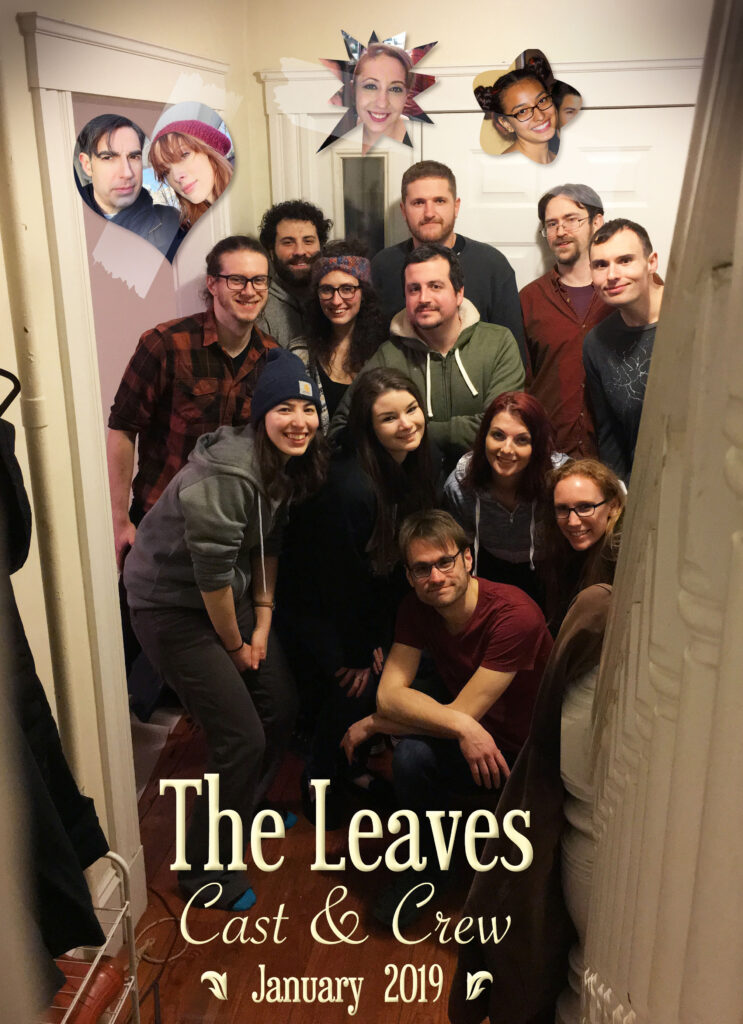
“Into every life a little rain must fall. For some this is a blessing, for some a curse, and for some it may be both in disguise. Meet Rama Rodriguez–account number 2425133, 4.2 stars, no accidents. A storm chaser in a late-model Honda Accord. But what is a surge when the surge never ends? For Mr. Rodriguez’s next pickup is flagged on an unmarked back road of an unnumbered census designation between Old Hither and Yon Terrace… in The Twilight Zone.”
“Say hello to Mr. Robert Patton, undertaking the most dangerous act that mankind has yet devised: stepping out of his front door. Because somewhere out in that angle of short memoried softwood and lost soccer balls lurks something not native to the crisscrossed streets of man’s housing-developed world. Something lean, and hungry. A creature wholly unknown to Mr. Patton’s cozy world, but attested to in numerous travelogues… from The Twilight Zone.”
“It’s a lonely vigil being the last knight and defender of the esoteric, even if only the corner-of-the-pub variety. Take a barstool next to your new old friend Matthew Blazek, topic expert. Tip one back and learn a thing or two, for it’s last call, and you may soon need both a stiff drink and a bit of advice–because this public house, along with you and its other occupants, are about to be transported to a time and a place that can’t be. A misremembering by the universe. An anachronism wrapped in a mystery, shunned to a quiet corner… of The Twilight Zone.”
“These two outlined, highlighted, tired eyes belong to Ms. Naomi Cabrera. Following the press of a button they’ve just slid off an instrument panel familiar to many of us: a brass oracle that’s long since taken the place of a man or woman in a hat, who once guided us up into the belly of a steel-boned, stone-clad, concrete beast. Did departed Romans pay their ferryman for his boat, or for safe escort? When the tower is alone, and angry, what revenge does it take on those tiny homunculi that circulate within? Naomi is about to learn, because she’s just pressed the wrong floor; a number between numbers, with a broken light; home to empty suites, the drone of air conditioners, and a small import/export concern with one other office… in The Twilight Zone.”
“Measure, tick the grease pencil and rack focus on one Eric Cheung. A man of his time, once conjured by two thin threads applied with a bit of spirit gum and a ‘comic’ accent. But the comedy masks, real and false, are not on the propman’s call list today. Our man’s sides specify a location well beyond the comfortable sets and Kino daylight; past the disused facades of once popular genres; past even the empty business offices of 90 year old hack writers and producers too cold to even meet with death in this town; through a parking lot, over an arroyo; somewhere in memory’s tall grass between the Ventura Freeway… and The Twilight Zone.”
“You’ve rolled past him on moving sidewalks at every wheel and spoke; half-watched as a dozen stewardesses poured him a thousand tiny drinks; maneuvered a bag between him and endless racks of tchotchkes that somehow serve only to make their emblazoned airport feel less like a definable location. Risk an extra minute in your boarding group, squint into the sunbeam, and you may just make out the tall form of Shlomo Harnas–citizen of the world, native to nowhere. Neither super spy nor wandering jew, just another mug trying to catch a codeshare to a little-trafficked field coded ‘H-O-M-E,’ with a connecting flight… through The Twilight Zone.”
“The Watchfire” is a deep time science fiction screenplay that plays as symbolist fantasy/horror, in the mode of Jack Vance’s Dying Earth, or films like Evolution, Innocence, and Sauna. Two 10-year-old girls guard a flaming beacon alone on a hill by the sea. One day a third child appears.
Concept art on the blog here.
At barely six pages, “The Watchfire” can be filmed on a modest budget with a small crew. This is a breakdown of how.
Three young actors are needed. The two “sisters” (the Dawn Girl and the Dusk Girl, age 10-12) will need matching long blonde wigs, and simple handmade-looking dresses matching their hair. One will need to memorize two long-ish blocks of text–to be recited as stories, not performed as lines–the other only one recital. They should be rehearsed together in the weeks prior to filming, with a focus on being comfortable and engaged with one other. The third (the Golden Boy, 10-12) will need a simple handmade “castaway” outfit of canvas and rope. He should be rehearsed separately. The childrens’ parents/guardians will need to sign off on some violence in the film, though very little that’s apparent to the actors on set. I won’t pretend to be an expert on directing children, but per Lenore DeKoven it’s best if the children are minded on set by someone other than a parent; children tend to have trouble focusing with a parent present. (Think home vs. school.) Limitations on shooting hours will have to be researched and planned for.
Filming will take place over a weekend. As I’m currently based in Boston, coastal Maine will be the most accessible shooting location, although northern California (near my sister) or the Swedish coast (near Denmark) would also work. The requirement is a temperate wooded area where the hills meet the sea. Shooting in Maine would allow me to save on accommodations by using the visitors’ apartment at my mother’s house. (Two of the kids even get bunk beds!)
Three filming locations will be needed:
The primary shooting location will need to be built in situ beforehand. It consists of a central object (the beacon) resembling a dead tree turned to stone, with eternal flames playing across its branches. Beside it sit two small pools of indeterminate depth. A ring of stones surrounds the beacon. The surrounding tall grass is trampled into a crop circle about 40 feet in diameter, with a second ring of stones marking its outer boundary.
A property owner’s back field would be ideal. The house can be quite close by, as long as it’s out of the shot. (A friendly house is also helpful for costume changes, bathroom breaks, emergency battery charges, craft services, etc.) Sync sound would be needed on this set, so proximity to a busy road is a no-go.
The beacon itself will be only partially built, to a height about a foot taller than the actors. The upper branches and flames will be created digitally in post-production. Practical lights will be hung from booms atop the beacon, to be covered over with CGI. Although the sisters enter and exit the pools in story, this can be largely faked with staging and cutting. Mylar sheets under a few inches of water may work to simulate much deeper pools. (The bottoms are never seen.) Tutorials for creating a crop circle with planks and ropes are easy to find online.
For the effects work, a chrome ball must be filmed with bracketed exposures at each setup on the beacon set, to generate an Image Based Lighting model. Instances where the actors move in front of the CGI tree elements will have to be hand rotoscoped.
A couple of brief scenes take place just outside the beacon’s crop circle. They’ll almost certainly need to be filmed elsewhere. No build. Sync sound won’t be needed. The scenes can probably be shot guerilla style near a public lookout.
The effects work here is largely subtractive: Removing any trace of civilization from the background. Towns, ships, square fields, vapor trails, roads, etc. will need to be painted out in a tracked travel matte. Elements the actors pass in front of will have to be rotoscoped out.
A single, relatively brief scene. No build. No sync sound.
The trick here is that Maine’s inshore waters are littered with brightly-colored lobster buoys. The best option may be to film near high tide in a cove with extensive mudflats. (Traps are set below the intertidal zone; the farther out the low tide line, the smaller and more distant the buoys, making them easier to paint out.)
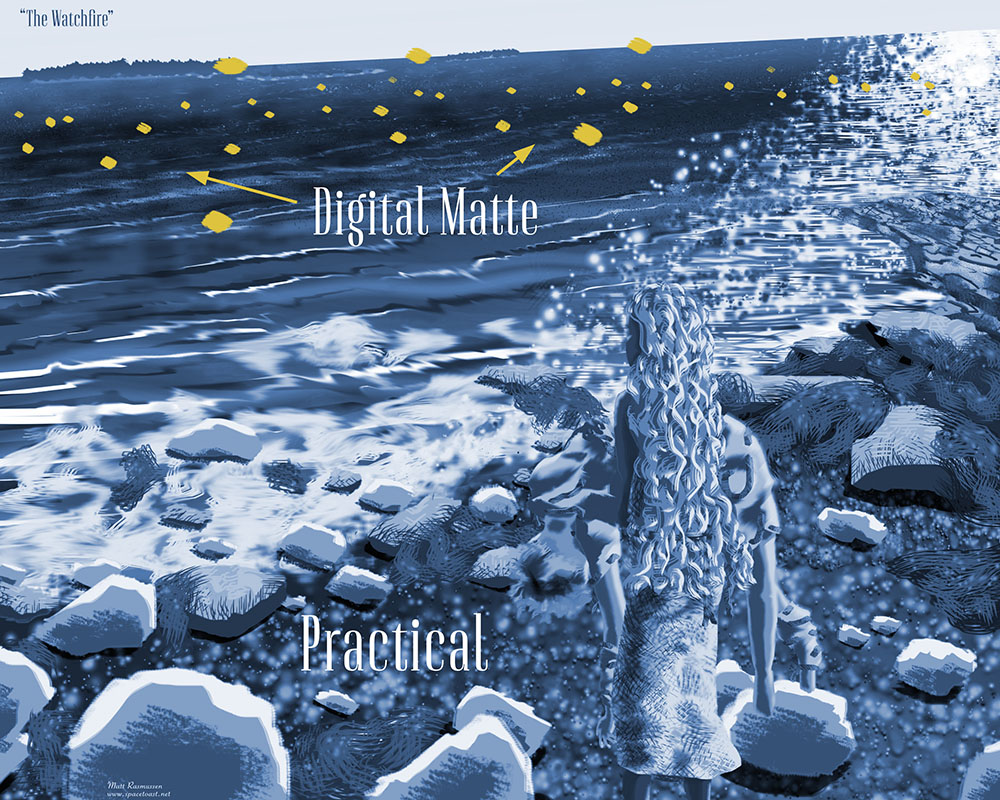
Establishing shots will present the same civilization problems. These will tend to be fairly static, and can be constructed as matte collages.
Special effects will be done by me in Fusion, which was our primary tool on “The Garden, 1910.” Unless I can secure some kind of residency, they’re likely to take a couple months to complete on evenings and weekend.
The project can be accomplished in about 3-4 months, start to finish.
Required personnel:
One of the germs of “The Watchfire” was a partial mishearing of Quicksilver Messenger Service’s 1971 song “Fire Brothers.” The mondegreen method seems about right, as no one can seem to agree on the exact lyrics to this song. Here’s my best attempt:
In the valley where the loons and lovers play
Lived two children who were born on Saturday
One was dark, one was fair
Fathered by the hawk, mothered by the mareStranger children you will never see;
Brothers of the forest and the sea
One was land, one was air
And they keptthetwo fires burning thereIn a golden vessel and silver vase
Kept them burning in that strange enchanted place
Kept them burning to the sky
For they knew someday the sun would die
Edit: After blasting this on real speakers, I think Steve’s right. Thanks, fire brother!
Her bare feet linger just within a crop circle bounded with a ring of stones. A second ring of stones lies closer to the center. In the middle, flanked by two small mirrored pools, looms the BEACON itself–taller than her, topped with a flame that isn’t fire.
A lone BEACON of light shines from the wooded hills above a shore untouched by man.
The DAWN GIRL (10) looks down from the hill, wringing her hands as the GLOW of the explosion below touches her face. She is fair with extremely long blonde hair, draped in a shapeless garment of the same color.
Dusk carries the body to the sea’s edge. She’s about to drop it into the tidal mud when, brow knitting, she leans in. A faint, regular CHIRP-like sound eminates from the golden boy’s mouth, like a ticking counter.
Currently, our challenge with The Garden, 1910 is finding film festivals willing to program a 30 minute “short” film–never mind one with extensive (non-sexual) nudity. Private screenings both in the US and Denmark have been extremely positive, but we’re not exactly teabagging the zeitgeist.
Our challenge in making it was one of bringing across a big-budget 1910s fantasy film on a 2010s microbudget. As the production designer and cinematographer, I wanted to know what it was like sitting in a smoky cinematograph watching a new, hand-colored print of a film like ours.
We came up with some terminology: The illusion vs. the effect. The effect was how we would actually achieve the shot: greenscreened footage of actors, puppets and miniatures (filmed on an iPhone 6s with Filmic Pro) composited in Blackmagic Fusion, Final Cut Pro X and Motion, with additional elements from still images, Animation:Master and Photoshop. The illusion was how our magician-turned-filmmaker would have created the shot using period techniques: sets with sometimes elaborate stage mechanisms, multiple photographic exposures, splices, color-tints, pyro, forced perspective, piano wire, Pepper’s ghost, and so forth.
The subconscious effect of frame rate, and how variable frame rates can be used artistically, is something I’ve been exploring. The Garden, 1910 actually runs at 60fps; a blurred three-blade shutter fades each frame in and out, running the “film” at the slightly unsteady 17-19fps of a hand-cranked projector. As the camera would also have been hand-cranked (at a slightly lower 13-14fps for a better exposure) each frame of the fully-composited footage also has a slightly randomized gain adjustment, to simulate variability in exposure. (Filmic Pro will record footage at an arbitrary frame rate like 14fps, but from working with the footage my impression is that the iPhone hardware itself will only capture at certain fixed frame rates, and Filmic merely discards the unwanted frames.)
Obviously, we weren’t content to slap an “olde timey film” filter onto the composited footage and call it good. Each composite in Fusion was piped through a battery of patches to extract and then imperfectly add back in false color, to simulate hand-coloring. (This was a nightmare, but probably an instructive one. I’ll drill down into it, with some downloadable material for Fusion tinkerers, in an upcoming blog post.) The completed “film” frames from each sequence (one frame per frame) were edited in Final Cut, with glue splices added as a custom FCP transition from Motion. (Don’t look down on Motion; it’s a real Swiss army knife, and incredibly fast.) The footage then made a round trip to Fusion, where it received unsteady re-timing to 17-19fps, shutter flicker, gate jumping, vignetting, emulsion dust and scratches, exiting as 60fps finished footage–and making a round-round-trip to Final Cut for final editing.
1. EXT. COTTAGE – NIGHT
A single dim, warm LIGHT above the front door struggles into the soaking mist, revealing the front of a MODEST REED-WALLED COTTAGE, round and set over the water.
A REBEL slips by. Dark, ragged fabric from head to toe divulges only parts of a helmet and utility vest. We can’t see their face — and we never will.
MATCH DISSOLVE TO:
2. EXT. COTTAGE – DAY
Morning finds us at the marshy edge of a pleasant lake.
Three STORM TROOPERS march toward the door, their white armor Endor-style, and era. The FIRST TROOPER stoops, blaster sweeping the short crawlspace between the cottage subfloor and the lake. A few machines hang down, nothing big enough to hide a person.
FIRST TROOPER
Clear, sir.
SECOND TROOPER
Sub droid’s found nothing in the water.
LIEUTENANT
Send it away.
3. INT. COTTAGE, CONT.
A familiar, visibly ageing Gungan answers the door.
JAR-JAR
Oh! Me’sa got officers coming here!? What can dis’sa be happening?
LIEUTENANT
A rebel against the Empire has been tracked —
Jar-Jar’s foot catches unluckily on a set of ceremonial spears near the entrance, which go CLATTERING to the floor, nearly gutting the first trooper.
FIRST TROOPER
Watch it!
LIEUTENANT
Step aside, Gungan.
JAR-JAR
Oh no! Rebels in meesa house? No no no! Find them!
The interior is spartan. Tidy. One room. Aside from the (many) mementos of state hung around the perimeter, it contains only a small kitchenette and a few sleeping cushions strewn about the floor.
The lieutenant gestures toward the ice box — the only space large enough to hide a person.
SECOND TROOPER
Sir.
FIRST TROOPER
In position…
The troopers push past the hapless Gungan with levelled blasters.
JAR-JAR
Rebels in meesa ice box?! Oh no! This-a terrible!
With interlocking fire, the troopers approach. At a signal, one THROWS THE LID!
LIEUTENANT
Report?
Both look in, nonplussed.
FIRST TROOPER
Half a sculptrin fish, sir. And, maybe, some cake.
JAR-JAR
Ooh! Meesa be saving that cake.
They lower their blasters, look around.
LIEUTENANT
(into a comlink)
Clear.
They leave.
After a moment Jar-Jar quite calmly scoops up the spears, setting them upright and closing the door.
His little pot-bellied kettle WHISTLES.
JAR-JAR
Muy bad business. Muy muy…
He pushes the window open, cocking an ear.
Jar-Jar pours water and a sprinkling of plant grounds into not one — but two cups.
JAR-JAR
(cont’d)
They’sa gone now. Is’a safe.
Two cushions, not touching, stir on the floor. The rebel pushes them aside, one from their legs and one from their upper body, hips sunk into a pit crossed by a bit of flooring — no doubt hidden by a domestic machine below.
REBEL
(whispered)
I didn’t cover my tracks very well.
In sotto voce, we still can’t even tell the faceless rebel’s gender.
JAR-JAR
They’sa droid spying under the lake gone too.
(points reassuringly to his big ears)
You’sa Rebel, eh? You’sa fight the Empire? You’sa make war, so you’sa
spawn make houses, so you’sa spawn’s spawn make poems. Yes?
REBEL
I — Senator?
Jar-Jar sits. In the bright sunlight streaming in from the lakeside window, his every wrinkle seems in sharp relief.
JAR-JAR
I’sa not a Senator no more. Never really was. Shouldn’t have been.
It’s not for making pretty up the past now; just living small life of
the old Gungan. My skin, it’sa not keep good water in or out, that’sa
how Gungans say it.
REBEL
They said you might be able to help me get off-planet.
A swell of displaced water creeps stealthily toward the cottage. A ROBOTIC EYE — not dissimilar to the one at Jabba’s palace — rises to the surface, cleaving the water periscope-style. The rebel scrambles for the false cushions.
JAR-JAR
Ahh! Me’sa lunch here.
Underwater delivery droid EL-ZED disappears beneath the cottage. A manhole-sized iris HISSES open in the floor. The wet metal eye pops up through an appropriately-sized hatch to the side as a BATTERED METAL RACK rises into the room — atop it a metal, but unmistakeable, TAKEOUT CONTAINER.
JAR-JAR
(cont’d)
Mmm-mmm! Smell’sa that good seaweed.
(He takes it with relish)
Thought I said no fish flakes…
EL-ZED BEEPS his inculpability.
JAR-JAR
(cont’d)
Here, you’sa meet a good friend. Meet El-Zed Vee-Three. She’sa being
your ride out of here.
The rebel steps to the iris, gingerly testing the ladder-like delivery rack, and taking a peek down into the cramped, rusty delivery bay. The eye watches interestedly.
REBEL
First class.
JAR-JAR
She’sa take you to the big kitchens at the seaweed factory. There a
slow freighter at the pad, leaving at noon. Just tell the captain an
old froggy sends you. Here —
(takes a small object off the shelf and tosses it to the rebel)
Very slow freighter. You’sa be wanting a book. This’a by a friend,
dear departed long time ago.
At a CLICK, a page of alien text momentarily appears in the air with a portrait of AMIDALA.
JAR-JAR
(cont’d)
She’sa teach you muy thing about rebelling. Now go go. Time not
a’waiting.
REBEL
Thanks for this. I won’t forget you.
The rebel finds room inside the droid’s tiny hull, as the rack CLATTERINGLY retracts.
JAR-JAR
Not forget me? You’sa never met me!
The iris closes.
CUT
1080p (vertical) shot of 1 teaspoon of cornstarch blown into the air near a flame source about 30x. Filmed at 120fps, playback at 30fps. As much fun as you’ll have doing this yourself, these pyro elements are released into the public domain for any and all usage, commercial or otherwise.
These elements were created for Troy Minkowsky’s “The Garden 1910” a Rhino Crate production currently in post.

To the extent possible under law, Matthew I. Rasmussen has waived all copyright and related or neighboring rights to 30+ Cornstarch Fireballs. This work is published from: United States.
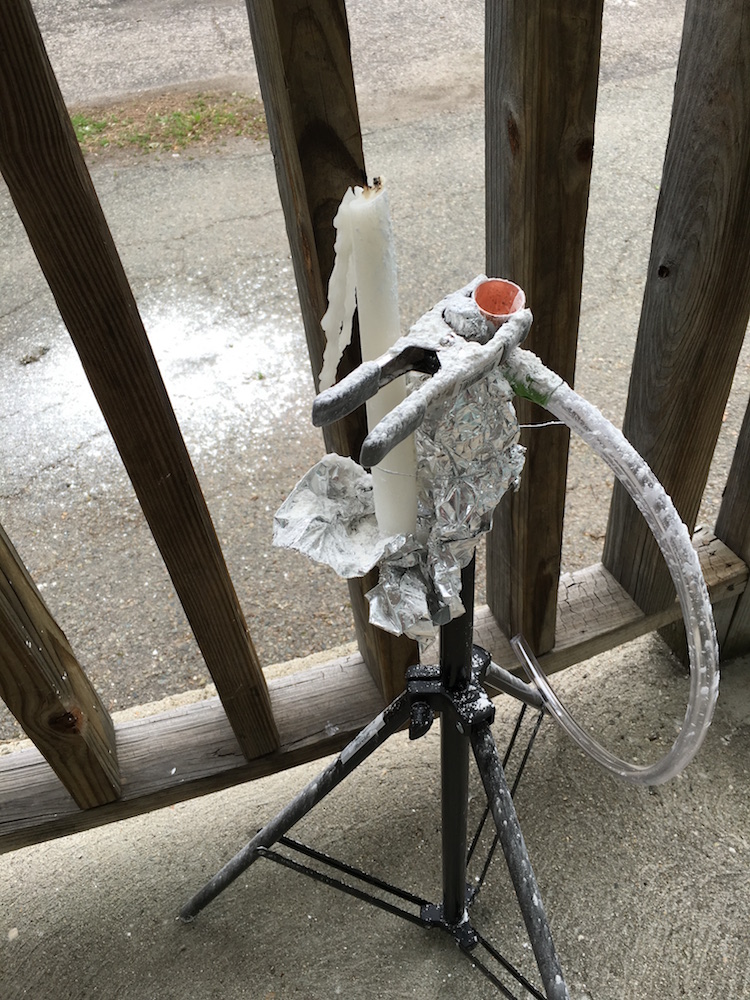
Speaking of film school, a new copy of my award-winning short “Marboxian” is now available on YouTube, in one piece and in crisp 480p resolution. Slightly smaller embed below.
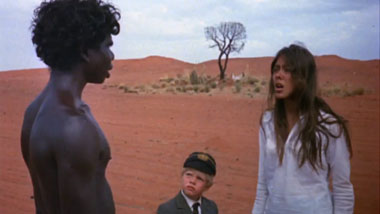 A man drives his son and teenage daughter (credited only as White Girl and White Boy) into the outback, lights the car on fire, tries to shoot them, and caps himself. Young aborigine (Black Boy) finds them, helps them return to civilization. Film.
A man drives his son and teenage daughter (credited only as White Girl and White Boy) into the outback, lights the car on fire, tries to shoot them, and caps himself. Young aborigine (Black Boy) finds them, helps them return to civilization. Film.
This isn’t a movie that’s seen very often anymore, which is a shame.
I actually first saw Walkabout in a film class in high school. We had a video projector on the cyclorama of the school stage jury-rigged into a quasi-cinema. Our teacher, having spent his ’60s youth (and met his Kiwi wife) hitchhiking around Australia and New Zealand (in a way very foreign to a ’90s teenager) didn’t seem to have actually sat down and watched the movie through in some time. Being reminded how risqué it becomes at times, the class could see him squirming, but we wouldn’t let him turn it off.
What a remarkable film. It has moments that’ve stayed with me ever since, through film school and beyond. Interestingly, the current rage that year for us Black Boy/White Girl-aged students had been Aussie Baz Luhrmann’s overclocked refresh of Romeo + Juliet. The two might make an interesting double feature.
An animation loop, for your pleasure. Something to remind me both what I love and hate about doing character animation. Created in Animation:Master and Final Cut.
Does anyone else remember that old “We’re gremlins from the Kremlin” Warner Brothers cartoon?